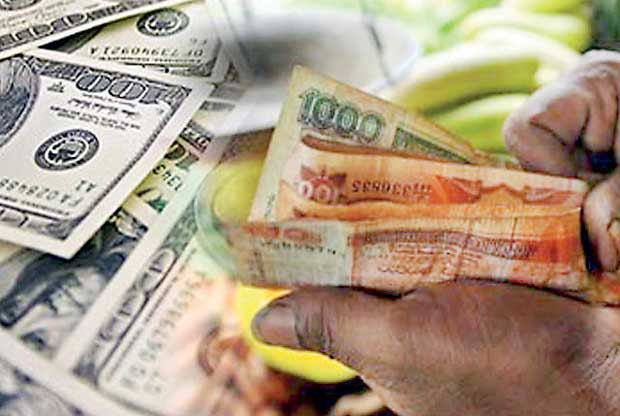07 Apr 2017 - {{hitsCtrl.values.hits}}

 It has always been my pet subject of digital marketing, which I’ve invested time and knowledge to pour in thought to a one-page article. This time around I had a different thought of gathering information to make aware about the remittance business that I’m in. Understanding the potential and inflow of remittance to Sri Lanka, I couldn’t keep away from sharing my thoughts about it.
It has always been my pet subject of digital marketing, which I’ve invested time and knowledge to pour in thought to a one-page article. This time around I had a different thought of gathering information to make aware about the remittance business that I’m in. Understanding the potential and inflow of remittance to Sri Lanka, I couldn’t keep away from sharing my thoughts about it.
Sri Lanka is an open market economy. As in many other developing nations, Sri Lanka’s official records show that remittances have grown dramatically over the past decade. Nevertheless, the role remittances plays in development as well as the growth effect of this unconditional migrant assistance are under-researched and needs more development policy-oriented attention. In the meantime, the protracted civil war has elevated the importance of this injection of foreign exchange into the national economy.
Why remittance?
Remittances flow directly from one person to another. Also, unlike the official aid flows, the process of transferring remittances does not include tax and the only cost incurred is that of the money transfer service. The recent competitive expansion in the remittance industry has reduced the cost of remitting money across countries. Hassle-free and faster remittances are also freely available in Sri Lanka.
Sri Lanka has been the most liberalized economy in South Asia, recording greater trade dependency with an export and import share in gross domestic product (GDP) that is higher than 55 percent (often referred to as the trade dependency ratio). The country persistently depends on worker remittances as an attractive source of financing the widening trade deficit in its balance of payments. Remittances are the second largest source of external financing. They help to offset over 70 percent of the trade deficit and to reduce the current account balance to a manageable level. After garments exports, remittances have become the single largest component of foreign exchange inflows to the economy.
Remittance pattern in Sri Lanka
Most Sri Lankan migrants, especially almost all of the ones in the Middle East, emigrate for a fixed period of time and individually, without taking their families with them. When there is no possibility of settlement in the destination country, then migrants are more likely to save their income and either send it as remittances during their stay or bring with them when they return. As a result, while Mexican remittances from the US are likely to decline over time as the migrants settle permanently and their families join them, this is not likely to be the case in Sri Lanka. As long as there are migrants in the Middle East, remittance flows are likely to stay stable.
Remittance impact for Sri Lanka
As of 2016, remittance inflows account for almost 10 percent of Sri Lankan GDP. How are the remittances spent? And it is definitely the case in Sri Lanka, thus it indicates that remittances are more likely to be spent on investments whether these are physical or human capital investments such as education. There is naturally a selection effect - people with good investment opportunities are more likely to migrate and send remittances.
Furthermore, many unobservable characteristics, such as entrepreneurial ability is likely to be higher among migrants. Thus, it is very important to control for these selection and endogeneity biases as much as possible when identifying the development impact of remittances, especially through the spending channels.
Are remittances important in removing credit constraints? This is one of the key issues in financial development, especially in cases where borrowers do not have access to capital markets and/or there are capital market imperfections. In this case, people with investment opportunities cannot borrow and investment – which is crucial for development and growth – does not take place.
Remittances during the time abroad can relax these constraints whether through savings or creating opportunities – such as collateral – for financial market access. This can be especially identified when we survey migrants who have returned and observe what they have done since then in terms occupation and labour market activities.
Are there community spillovers of remittance, other than the families? This is another key question in development. The extended families and the communities benefit from remittances, whether directly as recipients or indirectly through the activities of the migrants’ families.
Remittance business
The foreign remittances of workers and others overseas have become the single largest foreign exchange earner and are now the mainstay of successive government budgets.
Migrant workers (300,703) departed for foreign employment in the year 2014, which reduced to (263,307) in the year 2015. This is a dip of 12.44 percent.
Sixty five percent of migrant workers have been males in comparison to 34 percent of females in 2015.
Until recently, labour migration from Sri Lanka was dominated by females departing as housemaids. Subsequent to many concerted policy efforts, such as the family background report (FBR) requirement, pre-departure training and upgrading the existing skill training to internationally recognized levels, this female and low-skilled-oriented migrant worker flow is now transformed into a more skilled and male-centric flow.
As a result, the share of females among migrant worker departures further shrank to 25 percent from 28 percent in 2016. The other skills groups, such as professionals and semi-skilled groups also experienced growth to reach shares of 2.4 percent and 2 percent, respectively. This gender reversal and upskilling of migrant workers, coincided with the first-ever decline in inward remittances in 14 years.
The main markets of remittance inflow are Saudi Arabia, UAE, Qatar, Kuwait and Oman. These markets have hired approximately 88.3 percent of Sri Lankan workers in the year 2016. In the year 2015, the workers’ remittances had decreased US $ 6,980.2 million (Rs.948,936.31 million) , while the figures were recorded as US $ 7,018.0 million (Rs.916,367 million) when it was compared with the same period in the year 2014.
US $ 7.2 billion (Rs.1.1 trillion) is what foreign remittances bought into this country in 2016.
Workers’ remittances are also expected to slow down, given the increased availability of domestic employment opportunities and policy measures to discourage migration in the semi-skilled and unskilled categories.
Remittances and poverty
Remittances, in fact, have great potential to generate a positive impact on development and poverty reduction in Sri Lanka. It is important to note that remittances can reduce the probability of food-based and capability-based poverty among underprivileged entities at the receiving end. This applies to both rural and conflict affected areas of the country.
Where widening inter-regional income disparities are concerned, the migration of rural men and women could contribute to family income and, thereby, to rural economies. In many cases, this happens through the remittances of the primary breadwinners.
It is evident that much of Sri Lanka’s labour exports is induced by household economic hardships. The departure of housemaids for the Middle East—from where the highest volume of remittances flows into Sri Lanka—is mainly determined by the economic hardships in their families. The volume of remittances may, therefore, have positive correlation with wage levels of migrant workers and the economic needs of their families back home. Significantly, a colossal portion of the total remittances received by Sri Lanka meets day-to-day consumption needs rather than long-term productive purposes. In most cases, the remittance-recipient households set aside little or no savings for their future.
Remittance in digital world
The number of countries offering real-time intra-country fund transfer is increasing rapidly. This has made the instant cross-border small-ticket remittance on your mobile a reality.
With increased convenience, speed, safety and lower fees, the remittance business is becoming more efficient due to mainly it having a total cost saving (per remittance), corridor cost savings and most importantly these savings have an impact on poverty reduction.
While understanding the fact that there is numerous digital remittance developments such as Cash-to-Wallet and Wallet-to-Wallet implemented around the world, let’s ponder for a moment to see how Sri Lanka can have its potential hands opened wide for digital remittance implementation. The mobile subscriber growth rate in Sri Lanka has been strong between 2011 and 2016. Mobile market penetration increased from 87 percent to 123 percent in 2016.
The government effort is needed to facilitate the movement of financial transactions from cash to digital, especially with regard to reaching individuals in financially underserved areas.
When governments shift their social, salary and procurement payments and taxation and licensing receipts to electronic form, it creates a foundation upon which the private sector and person-to-person payments, such as international and domestic remittances, can build.
The private sector is a critical partner in this endeavour and there is a real opportunity to catalyze private-sector growth. The Sri Lanka government needs to offer a clear vision and tangible incentives in order to ensure that the private sector is an effective, competitive, transparent and efficient partner. Part of this requires that a level playing field be set up, whereby governments do not create disproportionate hurdles for a broad and growing range of providers to participate in the global financial system.
Empowering a diverse range of private-sector providers will increase competition, reduce costs, empower consumers, increase the scale needed for sustainability and drive financial inclusion.
The above is only the first part of understanding the remittance business and its importance for us, as a country. My future articles would pout thought about remittance marketing and digital remittance.
(Kevin Almeida [MCIM, MBA (Wales)] is UAE Exchange Head Corridor Marketing for Sri Lanka)
09 Jan 2025 1 hours ago
09 Jan 2025 2 hours ago
09 Jan 2025 2 hours ago
09 Jan 2025 2 hours ago
09 Jan 2025 2 hours ago